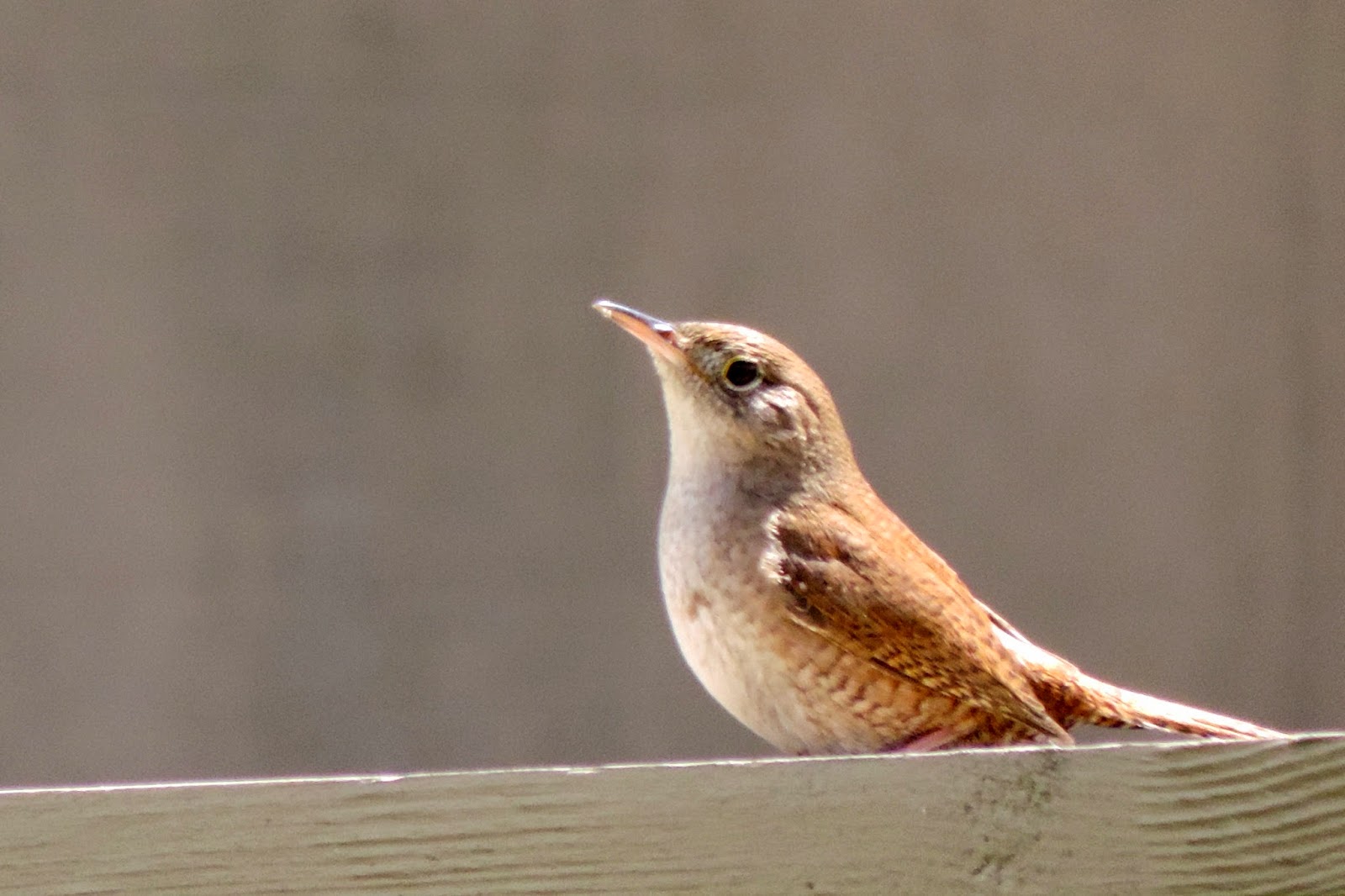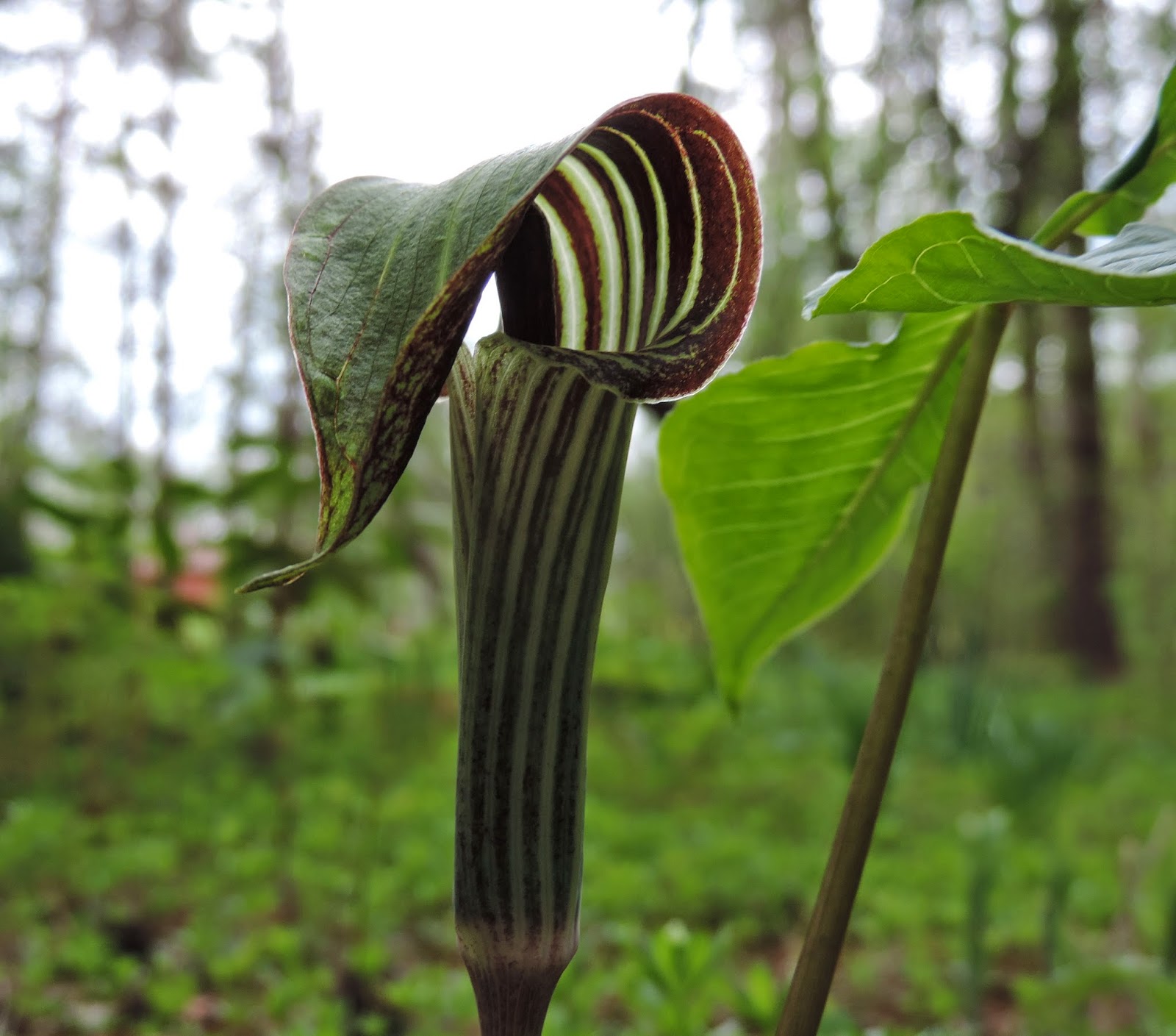And when the sun shines through the leaves you can almost see the leaves unfurl before your eyes. You want to rush the season and have summer here in full bloom. But lets not rush it. . . I have to keep reminding myself - after all I still have tulips blooming.
To me, I would like this time of year to last a lot longer because I know that once the trees are fully leafed out, they loose that spring vibrancy of the various shades of green.


Have you ever noticed that a lot of your spring flower colors are pastels? Pinks (tulips, bleeding hearts), yellows (daffodils, primroses), light blues (forget-me-nots), purples (violets, lilacs, irises)? And then the summer flower colors are hot colors like reds (zinnias, dahlias), hot pinks (purple coneflowers), gold (sunflowers, black-eyed Susans), and orange (daylilies, butterfly weed)?
The month of May here in the Northeast got off to a slow start, but now the spring flowers are bursting out, and the summer perennials have now grown into small mounds. Some of our perennials haven't even emerged yet like the hardy hibiscus. Still no signs of them. I think they are one of the last perennials to emerge.
 |
| Lily-Of-The-Valley |
I want to highlight the Lily-of-the-Valley in this post seeing as that's the flower for the Month of May.
This is a very sweet scented plant with lovely little hanging, white bells. This plant is poisonous (like many other plants) so be careful when handling it. Also, because of it's strong scent children might be attracted to the plant so be mindful if children are in the area of where it is growing. It likes cool temperatures and it is native to Asia, Europe and the southern Appalachian Mountains in the United States.
I have a few patches of this flower growing in my back yard. It spreads by sending out stems called pips or rhizomes underground. It prefers the shade, but will grow in sun. It can be used as a ground cover. However, I found that it is pretty slow growing and if you have other ground covers in the same area they might overtake it and eventually crowd it out. Because we have a large yard I have not found it to be invasive in areas where we planted it, but it has been reported as being invasive in some areas.
It grows to about 6-12 inches tall. When the leaves emerge in the spring they appear like a tight rolled up stalk. The flowers usually only last about a week or so, and occasionally it will form a red berry in late summer containing white seeds. For all the years I've had this plant I have seldom seen the berries on it. Children may be attracted to the berries because of the color, but they are also highly poisonous.
After the flowers die back the leaves will stay green in your garden until fall. The leaves are sword shaped and are very tender in the spring, but get a little tougher and thicker throughout the growing season.
The wedding bouquet carried by Catherine (Kate) Middleton to Prince William featured the Lily-of-the-Valley flowers.
If you would like to know what your flower is for the month you were born in, and what it symbolizes you can find it in this chart: Birth Flower.
 |
| Forget-Me-Nots |
Another prolific spring flower is the Forget-Me-Not. The Forget-Me-Not (Myosotis Sylvatcia) is a little blue flower on stems that are from 8 to 12 inches high. Occasionally you will see some pink or white flowers in the group. The flowers are pretty tiny but appear in large clusters.
Some spring garden tasks that you might want to do (as if you don't have enough to do already) would be to trim your spring flowering bushes after they are finished flowering such as azalea, lilacs, forsythia, bridal wreath spirea, flowering crab apple, bigleaf hydrangea, magnolia, mock orange, rhododendron, and weigela. These shrubs should not be trimmed in the fall because you would be trimming off next years flowers. Also, you do not have to trim them back if you like the current shape they are in, but just remember that in the fall they might have gotten quite large and then if you trim them you might be trimming off next year's blooms.
A tip for lilacs that I just read recently (but can't remember where and I would like to credit the source) is that if you have rhododendrons and azaleas growing in your yard and they are doing great, then you probably can't grow lilacs. Your soil is probably too high in acid. Lilacs like a low acid soil.
The last several years, I've had problems with our lilacs failing to bloom and I thought it was because we have too much shade (which is probably part of the problem). But it's most likely the soil. As our pine trees grew larger, more pine needles are produced and dropped adding acid to the soil. I have read too, that you can put wood ashes around your lilac bushes and that should help by increasing the alkaline in the soil and may improve blooming. Also, if you are using a lot of fertilizer that contains nitrogen, that will also keep your lilacs from blooming. Especially when you are fertilizing a nearby lawn. What happens is that all the energy in the plant will go to producing lots of foliage instead of creating the flowers.
Also, don't be afraid to cut lots of lilacs off your bushes when they are in bloom for yourself or a friend. Trimming these bushes keeps them healthy and will provide you with lots of blooms the following year.
Here is a good article on trimming your lilac bushes: Pruning Lilacs
 |
| House Wren |
~Maya Angelou
R.I.P. 1928-2014
R.I.P. 1928-2014
Thanks for stopping by! Feel free to leave a comment. If you have a blog leave a working link and I'll be glad to check it out.
#Gardening #Nature #NaturePhotography #LilyOfTheValley #ForgetMeNots #Lilacs #Blogging #Blogger

















































